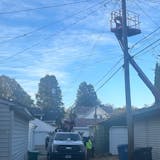Cedar Rapids has become the speed trap of the Midwest.
Ever since installing hidden cameras on the interstate that runs through it, Iowa's second-largest city has been sending out tickets at an unprecedented rate, including to thousands of Minnesotans.
Darrell Peterson, of Savage, got nailed twice in one day last August, when he and his wife dropped their kids off with grandparents.
"It was literally a half hour apart," Peterson said. "If there were signs saying the technology was in place, I certainly didn't see them."
Peterson received two letters from the city of Cedar Rapids on the same day. Inside each was a photo of his Hyundai Sonata and an order to pay a civil fine of $75. He thought at first the city had mistakenly sent an extra citation, but when he looked closer he saw that in one photo his kids were in the car and in the other they were not.
"They got us going both ways!" Peterson said. "I've got no issue with the violations. If we were speeding, we were speeding. My issue is with the enforcement methodology."
Iowa is the only state where cities post speed cameras on interstates, and no Iowa town has embraced photo enforcement of its expressway speed limit as wholeheartedly as Cedar Rapids, a city of 128,000 halfway between the Twin Cities and St. Louis.
But the system is under fire from Iowa transportation officials, who question the safety rationale behind it.


